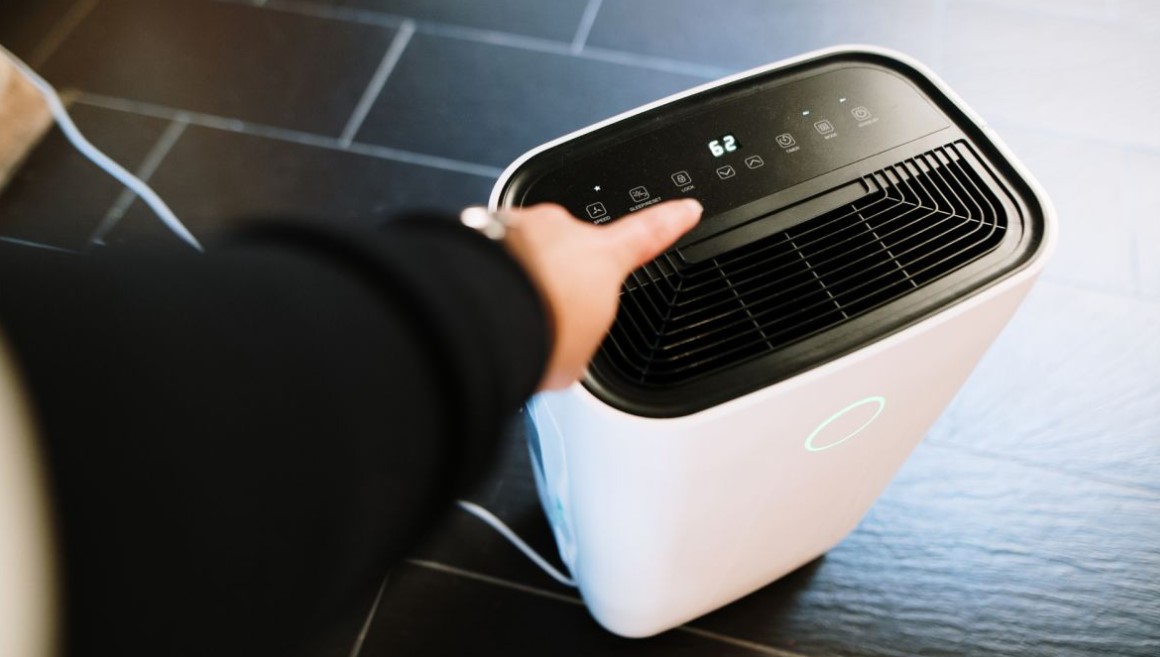Air Purifiers Vs Dehumidifiers: Which Is Best For Your Indoor Environment?
In the pursuit of healthier indoor environments, the choice between air purifiers vs dehumidifiers has become a pivotal consideration. Both can help control allergies and asthma symptoms, but their mechanisms differ. How do they operate, and which one is more suitable for specific conditions?
Air purifiers and dehumidifiers address distinct yet interrelated aspects of indoor air quality, posing a common dilemma for those seeking optimal air quality. In this article, we will discover the difference between these devices and which factors you should consider when opting for one.
Air Purifiers vs Dehumidifiers: How Do They Work?
Air purifiers and dehumidifiers work together to reduce allergens in the room, relieving people with allergies and asthma. The air purifier operates by circulating air through a filter to capture airborne particles and irritants such as dust, pollen, and smoke. Concurrently, the dehumidifier draws in excess moisture, effectively lowering humidity levels and killing mold and microorganisms that flourish in damp conditions.

Air Purifiers vs Dehumidifiers: Comparison
An air purifier and a dehumidifier differ in the following ways:
1. Function
By circulating air through a filter, air purifiers remove airborne pollutants such as smoke particles, dust, and even pollen, which is impossible with a dehumidifier. An air purifier can also prevent mold buildup by eliminating its spores through this process. Nevertheless, due to its inability to regulate indoor humidity, excessive moisture can lead to the resurgence of mold.
On the other hand, a dehumidifier is primarily designed to remove excess moisture from the air, lowering the room’s humidity level. While this device doesn’t directly clear or filter the air, it does play a role in eliminating allergens such as mold and dust mites that thrive in damp or humid conditions. When maintaining a humidity level below 50%, these sources of allergies and asthma are unable to thrive and eventually die.
2. Types
Types of dehumidifiers
There are two main types of dehumidifiers on the market: cool mist and warm mist. No matter which type you choose, both influence moisture levels and reduce humidity levels in the air. There are other types of dehumidifiers, which include:

- Mechanical/Refrigerative: This is the most common type and operates by pulling moist air across a refrigerated coil using a small fan. The condensed air is collected, particularly effective in warmer conditions with relative humidity above 45%.
- Adsorbent/Desiccant: This type is a unique humidity-absorbing material that moves along a belt exposed to the lower-temperature air being conditioned. The air is then reheated to eliminate humidity and is reused, typically maintaining levels around 35% or lower.
- Air conditioner: An air conditioner is inherently a dehumidifier.
- Ionic membrane: This particular type of ion membrane functions as an ionic pump, facilitating the movement of humidity in or out of sealed enclosures at a molecular level. Chemicals, fuel cells, and water enhancement are among the most common industrial applications of the device.
- Electronic dehumidifier: Using a Peltier heat pump, this type generates a cold surface to condense water vapor from the air. It operates quietly as it doesn’t have moving parts, though its energy efficiency is relatively low. This design is commonly used for smaller humidifiers.
- Makeshift: These are window air conditioner units that operate like mechanical/refrigerative dehumidifiers. Makeshift dehumidifiers release their heat exhaust back into the room as part of their operation.
- Whole-house dehumidifier: It is designed for installation in a home’s HVAC system. Excess humidity will be effectively reduced with these units, but they are the most expensive.
Types of air purifiers
There are various types of air purifiers, each with its method of improving air quality:

- Filter air purifier: These purifiers use HEPA (High-Efficiency Particulate Air) or ULPA (Ultra-Low Penetration Air) filters to circulate air, effectively capturing and trapping dust particles.
- UV light: Through ultraviolet radiation, UV light purifiers sterilize certain microorganisms, preventing them from reproducing.
- Adsorbent: This type uses specific adsorbent materials to manage fumes, odors, and chemicals in the air.
- Ionizing purifier: Using corona discharge, a potent electrical field, these purifiers generate oppositely charged particles that gather and settle out of the air.
- Ozone generator: Functioning as ionizing purifiers, ozone generators convert oxygen molecules in the air into ozone.
3. Application
Air purifiers are ideal for people with allergies, asthma, or respiratory issues, as they effectively remove allergens and irritants from the air. They are also beneficial in homes with pets or smokers, where odors and airborne particles can be problematic.
In contrast, dehumidifiers are particularly useful in regions with high humidity levels or in spaces prone to dampness, such as bathrooms or basements. They help prevent mold growth, musty odors, and moisture-related damage to furniture and belongings.
4. Cost
The cost of air purifiers varies based on their type and features. Basic models with HEPA filters are generally more affordable, while advanced models with multiple filtration technologies may have a higher price range.
Conversely, a dehumidifier’s cost depends on its type, capacity, and features. Refrigerative dehumidifiers are usually more budget-friendly, whereas absorbent and whole-house dehumidifiers are on the higher end of the price spectrum.

5. Limitations
While air purifiers effectively remove particles and allergens, they may not eliminate all volatile organic compounds (VOCs) or certain gases. Additionally, the effectiveness of an air purifier depends on its CADR (Clean Air Delivery Rate) and the room size.
Dehumidifiers primarily address humidity issues but may not eliminate all air pollutants. They are not designed to remove airborne particles and may not be able to protect wallpaper, furniture, or other household items from deterioration caused by moisture.
Factors to Consider When Choosing Between Air Purifiers vs Dehumidifiers
Now that you know the difference between air purifiers vs dehumidifiers, we will discover some of the key factors you should carefully consider when choosing an air purifier or dehumidifier for your living space.

Specific indoor air quality concerns (allergies, mold, odors, etc.)
One key consideration is your specific indoor air quality concerns. If allergies, mold, or persistent odors are your primary worries, an air purifier might be the preferred option. These devices excel at capturing airborne particles, allergens, and even neutralizing odors, making them excel at handling such issues.
Local climate and humidity level
If you live in a damp or humid environment, a dehumidifier becomes more essential. It helps regulate moisture levels, preventing mold growth and fostering a healthier living space. Conversely, if your area experiences relatively stable humidity, an air purifier can take precedence over other air quality problems.
Room size and layout
Room size and layout are equally important. Larger spaces might require multiple air purifiers or a more powerful unit to ensure effective air circulation and purification. On the other hand, a dehumidifier’s effectiveness can vary based on the room’s size, placement, and airflow patterns. Considering these factors ensures that the chosen device is appropriately sized for optimal performance.

Budget consideration
Budget is undoubtedly a significant aspect when choosing between air purifiers and dehumidifiers. These two vary in price, with air purifiers typically being more affordable. However, it is essential to factor in not only the initial purchase cost but also ongoing maintenance and operational costs for a well-informed choice.
Maintenance and operational costs
Speaking of maintenance and operational costs, air purifiers often require filter replacements, while dehumidifiers may need regular cleaning and occasional servicing. Evaluating these long-term responsibilities helps you gauge the overall convenience and cost-effectiveness of each device.
Should We Use Both Devices for Comprehensive Indoor Air Quality Improvement?
In many cases, using both devices can have a synergistic effect. Air purifiers target airborne particles, allergens, and odors, while dehumidifiers combat excess moisture. Together, they create a harmonious indoor environment that addresses a broader spectrum of air quality concerns. By strategically placing these devices and customizing their settings, you can achieve a balanced and thoroughly improved living space where you and your family can breathe easily and enjoy optimal well-being.

Bottom Line
In the battle of air purifiers vs dehumidifiers, the choice depends on your specific needs. Air purifiers excel at improving indoor air quality by removing particles and allergens, while dehumidifiers focus on maintaining optimal humidity levels to prevent moisture-related problems. By understanding their distinctions, you can make a well-informed decision to create a healthier and more comfortable indoor environment.
Related Articles